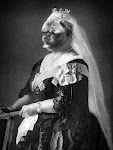Passion, rapture and love; three emotions that have inspired musicians to create some of their greatest works. Such was the overall theme of the first series of concerts by the Kansas City Symphony in the 2009-2010 season. Haydn's Symphony # 49 in f "La Passione" began the evening followed by Christopher Rouse's "Rapture" from 2000. To conclude the opening concert Music Director and Conductor for the evening Michael Stern, chose the autumnal Piano Concerto # 2 by Brahms, with Yefrim Bronfman as solo.
Haydn's "La Passione" is a bit of a curiosity among his symphonies. It is in a minor key whereas most of them are major key works and it begins with a slow sonata form movement instead of a sonata allegro. Since the work was allegedly inspired by the passion of Christ and Good Friday, the sonata da chiesa form of slow fast slow fast lends itself to the alternately reflective and dramatic mood of the work.
Stern and the KC Symphony have developed a reputation as excellent interpreters of Haydn; clear, crisp, bouncy, energetic and always elegant. This La Passione was certainly all of that, even keeping the long opening Adagio. The following Allegro was dramatic enough, full of the period Sturm und Drang. A sunny and bouncy, a bright spot in this sacred passion, but alas the trio section was spoiled by horn bobbles...sigh. The final allegro brought the work to a dramatic conclusion. Haydn was to abandon the sinfonia da chiesa form after this, perfecting the symphonic form that, with some minor alterations, lasts until today.
Haydn's more subtle and formal "Passion" was followed by a more overt and visceral incarnation, the "Rapture" by Christopher Rouse. Not "The Rapture" as celebrated by evangelical Christians, "Rapture" is a musical realization of "spiritual bliss, not necessarily religious in nature" or as his notes explained "a progression to an ever more blinding ecstasy". The work is unabashedly tonal for the most part and, as in Ravel's Bolero, slowly increases in tempo and volume to the rousing conclusion. The performance was dramatic, certainly noisy yet effective; marred only by some uncertain brass intonation and entrances in the slower opening section. There were the usual fine wind contributions from the flutes and clarinet sections and the symphony's able, but never overwhelming percussion got quite a work out.
It was interesting to compare the Bronfman Brahms 2nd with that of Marc-André Hamelin's a couple seasons ago. Bronfman turned in a more leisurely, introspective, but hardly less technically brilliant performance. This time, Principal Horn Alberto Suarez opened the work with a tonally beautiful and spot on solo, the important horn part was almost perfect through out the movement. Bronfman was certainly in top form and propelled the work forward, maybe a little less forcefully than Hamelin, but never let it get as weighty or turgid as a big German dinner.
Special note is given to Principal cellist Mark Gibbs for his gorgeous opening solo in the adagio for which he received an appropriate ovation and sincere greetings from Mr. Bronfman at the conclusion of the work. Although Bronfman's and Stern's finale was a bit more leisurely and lighter than Hamelin's more muscular and staccato reading, it carried sufficient weight to conclude this mighty concerto and not serve as just another scherzo as can happen with some performances.
The orchestra sounded richer and fuller than ever before, thanks to some tinkering with the seating. Stern has separated the 1st and 2nd violins left and right, with the basses and celli on the left (as one looks from the audience) rear and the violas in the center. This has given the orchestra the aforementioned fuller and deeper sound with more prominent (but not overwhelming) bass. The acoustics in the lovely Lyric Theatre (to be replaced in 2011 by the spectacular new Kauffman Center) are challenging to be kind. This new arrangement alleviated some of the muddiness of the strings and the feeling that the section was undermanned.
Next up, Kodaly's charming Galánta Dances, Rachamaninov's Symphonic Dances and the Dvorak Cello Concerto.
Sunday, September 27, 2009
Subscribe to:
Post Comments (Atom)



No comments:
Post a Comment